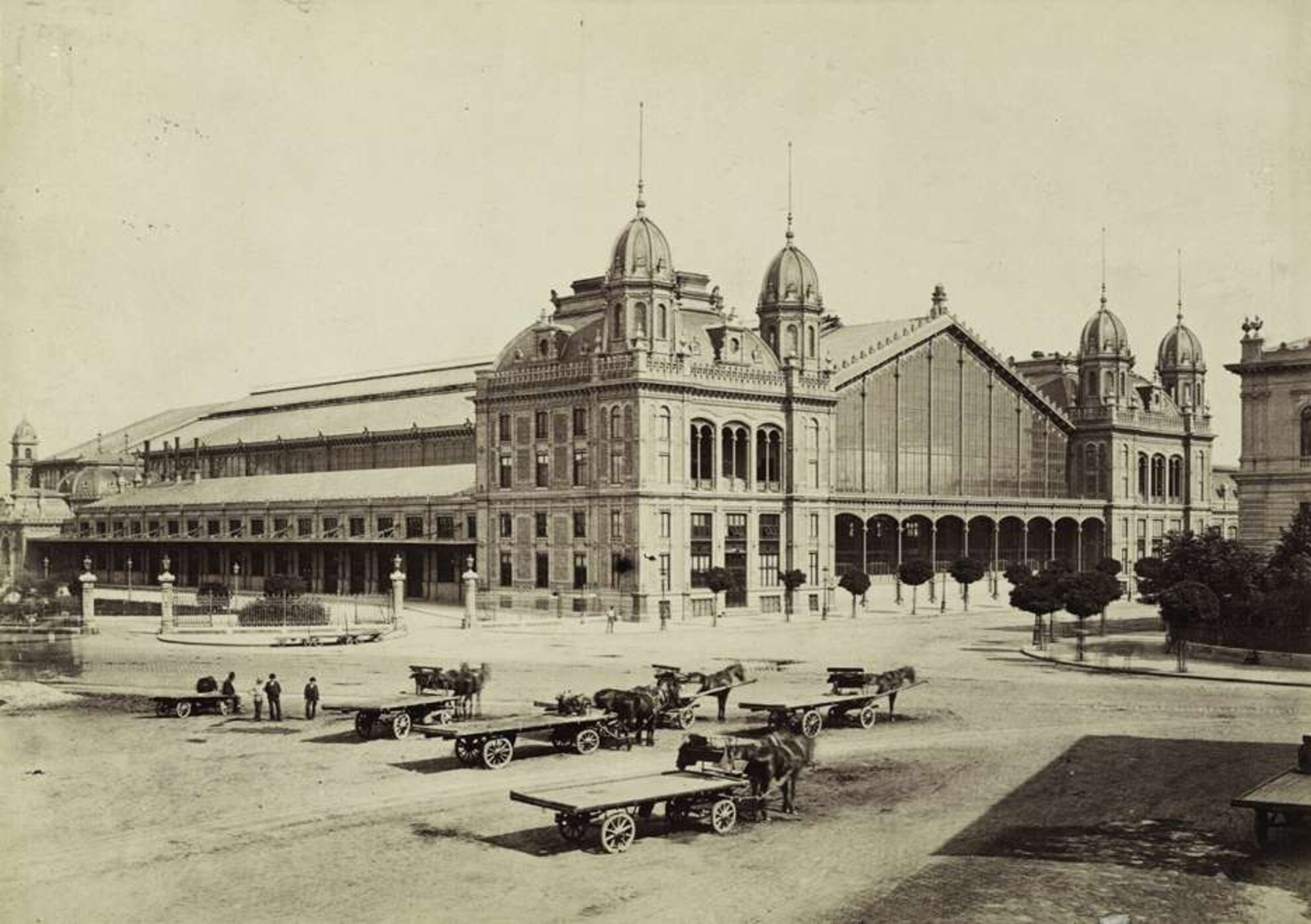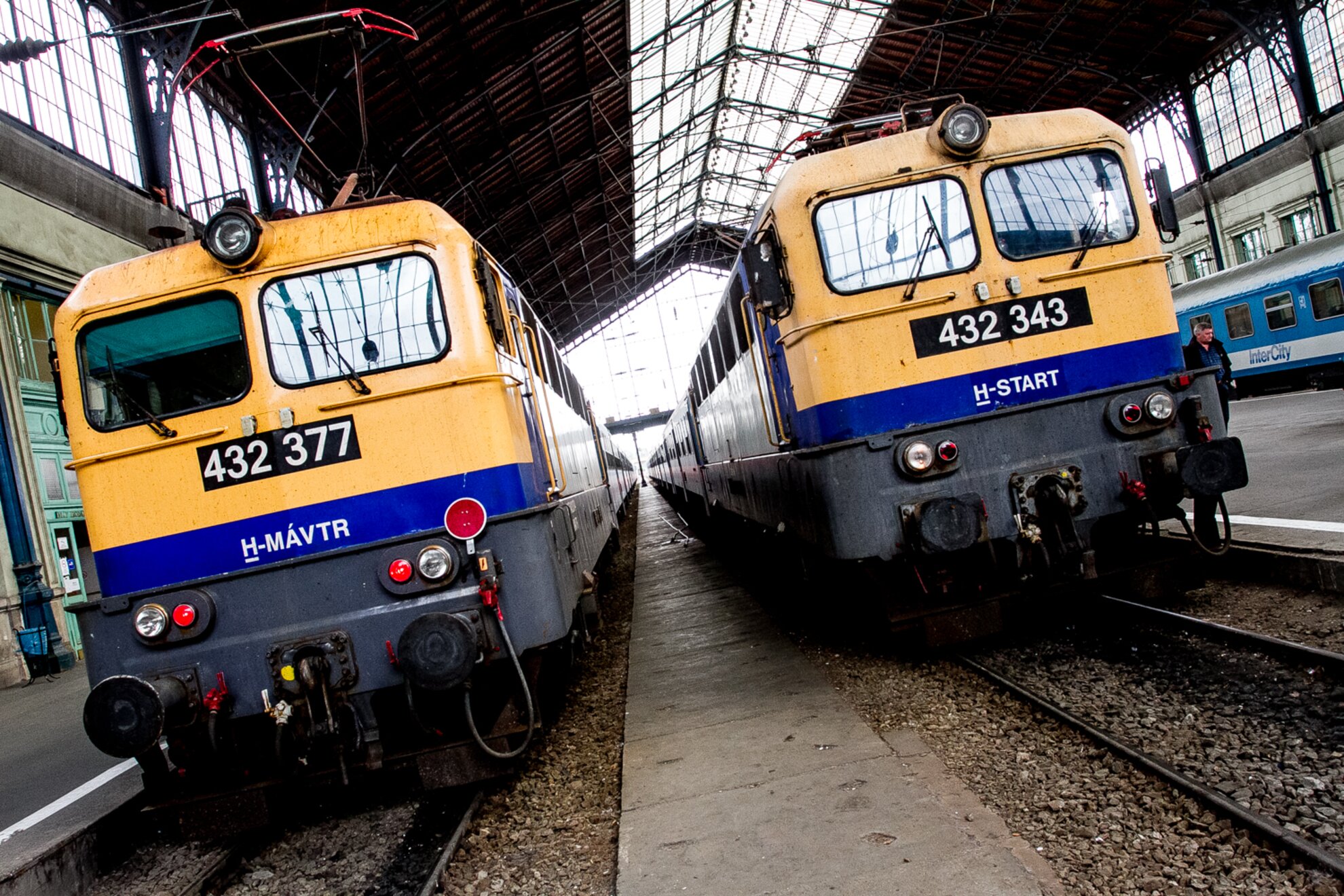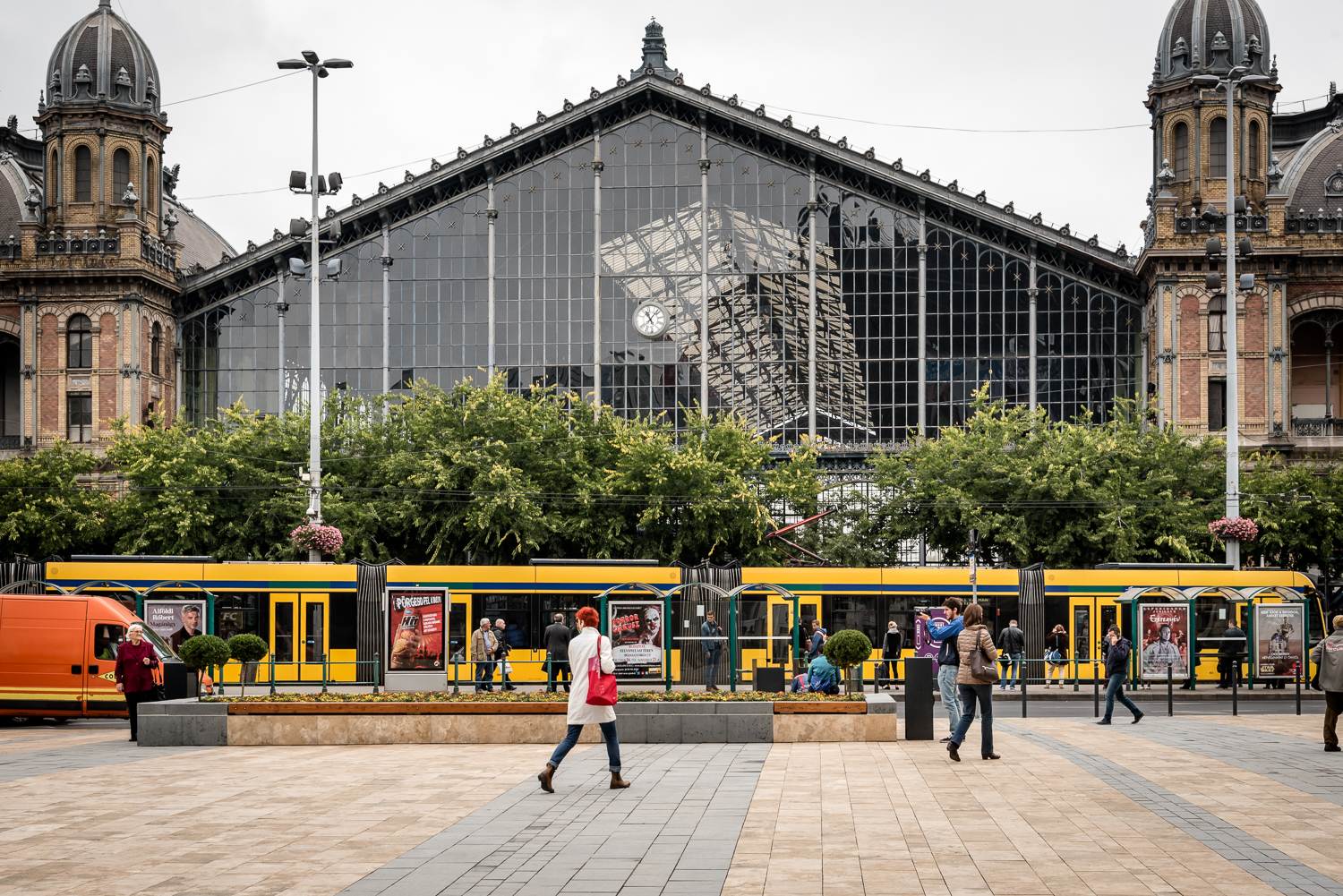Hungary’s first railroad line was built in 1846 between Pest – which had 300,000 residents at that time – and the nearby town of Vác. The terminal of this railway was more or less in the place of today’s Nyugati Railway Station, and was called Pesti Indóház. Due to a high increase in traffic, there soon came a need for expansion, which the management of the city only allowed if the new railway station would align with the Grand Boulevard. The owner, the Austrian State Railways, decided to demolish the Pesti Indóház and construct the Nyugati Railway Station in its place (the original building was not pulled down until the new station was constructed in order to let traffic pass smoothly).

Certain contemporary ideas even envisioned Keleti Railway Station to be built on the Grand Boulevard as well, which would have been beneficial for various reasons – and also incredibly expensive, as the railway lines would have been elongated on a viaduct all the way to the boulevard. Finally, the ministry signed the cheaper solution, and the new “rival” station was built at the end of Rákóczi Road.

The design plans of the new station, with a cost of 8 million forints, were made by Austrian architect August de Serres, who was later employed by the company of the world-famous designer of the Eiffel Tower, Gustave Eiffel. As a result of the construction works initiated in 1874, the station was erected with a light structure, and appeared as an imposing edifice with a pioneering spirit amid the contemporary architectural trends in the city. Due to its innovative iron structure, many people visited Budapest specifically to admire the new station.

Nyugati Station was built with a 146-meter-long hall deliberately made so that all train carriages could be reached from beneath a covered platform. The 6,153-square-meter, 25-meter-high hall with its glass façade was adjusted to the curves of the boulevard. The side structures were enhanced with windows, and were decorated by – according to the trends of those times – two tall domed corner towers on each side, and a French-style dome in the middle. They installed a central ticket center, waiting rooms, baggage storage, a station master’s office, police and guest rooms, and other offices, as well as a separate waiting room for Emperor
Franz Joseph himself.

The official opening of the then-so-called Budapesti pályaudvar (Budapest Railway Station) was on October 28, 1877, and the opening ceremony was attended by various influential people of the era, such as ministers, politicians, members of Parliament, the royal judge, and even the national commander in chief, who paid a visit with a huge military escort. The notables were welcomed and guided by de Serres himself, and the first train embarked on its first journey to Vienna from here two days later.The station played an important role in the modernization of the Magyar railways: Siemens & Halske’s modern switching system was introduced here for the first time in 1881, and later, the first electric Kandló locomotives embarked on their trial journeys from here. In 1891, when the station became the property of the Hungarian State Railways, it was renamed Nyugati Railway Station. This name had actually nothing to do with the station’s location within the city, or with the points of the compass, but with the company who financed the construction. At those times, the railway station’s hall served as a sort of a mini city; mansions were built around it, the main tram line had a stop here, and it housed a luxury restaurant, a hairdressing salon, and several other commercial units.

Its first spectacular expansion began in 1901, and lasted for three years; on the side near Podmaniczky Street they established a manufactory, a coal-delivery railway station, and a relief engine station; the Northern Freight Train Station was opened in 1908, and ten years later, the station at Irinyi puszta was installed. After the Treaty of Trianon, the country was in a dire economic state, which resulted in ideas for the elimination of Nyugati Railway Station, and the installation of a new station at Rákosrendező. Eventually, this never happened, but some restructuring still fit in the budget: the trains heading to Cegléd and Szob were separated at the Budapest Zoo.The building unfortunately suffered serious damage during the heavy fighting of World War II. The system could only be reinstalled in the summer of 1945, and the renovation of the buildings took several years. At the end of the war, there were plans for ceasing the station’s work, but finally due to the lack of financial funding, traffic was ‘only’ temporarily withdrawn from Nyugati.

In the ’50s, the most modern transfer station of the time operated here. Occasionally, the important freight trains took the place of – in the past – less significant passenger trains. The station’s strangest and at the same time most fortunate accident dates back to October 2, 1962. During a 40 km/h reversing, ten carriages became detached, and broke through the glass wall of the waiting room; the last carriage landed on the boulevard. As the unfolding disaster was announced through the loudspeaker quickly enough, only one person – an elderly lady – was injured severely.

In 1975, due to considerable corrosive damage, the building was declared to be life-threatening. Instead of a total demolishment, the authorities instead opted for a full reconstruction that was finished in December of 1979, so “Budapest’s Gate” could form a structural unit with the rebuilt Marx Square (today’s Nyugati Square). The square shone as a real transport hub; among many others, tram 47/49 ran all the way here, and the terminal of one of the trolleybuses was also here.

Budapest’s next modernization, the construction of metro 3 in 1981, affected the area again. An underpass system was built beneath the station and the square, while an overpass was built between Bajcsy-Zsilinszky Road and Váci Road. For this reason, in 1978 the notorious hotel by Nyugati Railway Station that the residents nicknamed Westend was demolished by explosion.

The next memorable milestone in the station’s history was in 1999, when a few tracks were closed down due to the construction of WestEnd City Center. The newly installed parking lot and the roof terrace of the shopping center covered the former roof tracks, and the façade underwent a facelift as well. In 2005, due to the possible establishment of a government district, the idea of the station’s demolition once again re-emerged, and a possible new location was again Rákosmező, where people could have traveled on the elongated line of the Millennium Underground. Due to its historic significance, the station’s hall would have been preserved with a different function.
In 2006, smaller tracks and buildings were demolished, but no serious alterations have occurred ever since. Some people think that the renovation of a technically obsolete hall and the expansion of the system equipped with 17 platforms would be necessary. Renovation plans for this not-so-pristine station have already been made, but so far, only the nearby Nyugati Square has been beautified.




